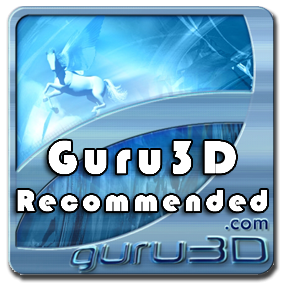Final words and conclusion
Conclusion
A small point I mentioned just moments ago was how space seemed to be at a bit of a premium in the Spec Omega RGB. Don't take this, please, as something negative. I think this is an exceptionally well-designed case, and I do not say that lightly at all. Naturally, this chassis is essentially a tarted up + RGB'.. ified? the variant of the already released Omega. Sure, there are some minor differences (e.g. drive mounting options), but if you put them side by side and left the power off, you'd be hard-pressed to tell them apart. However, for the form factor on show here, Corsair has managed to pack a truly impressive amount into this chassis. What do I mean by that? Well, for a start, whilst not a compact ATX mid-tower, it's by no means that big, either. Despite this, I'll rattle off what this case can fit:
- 360mm radiators.
- Full RGB control for mounted fans.
- Air coolers up to 170mm.
- GPUs up to 370mm (330ish in reality, with front radiator).
- Further radiator options up to 280mm up top.
So, looking at that list, it's fairly extensive. So much so that you'd think this case would be likely touching the $200'ish region, and yet it's happily hanging out in the mid 100's range. Naturally, that is not cheap, but when you look at the above and what Corsair includes for 'free' over the standard Omega, this case begins to look like a bit of a bargain. The build quality, just as a small point, is Corsair's usual excellent standard. It's all steel, weighty, and feels solid. I really cannot say fairer than that.
This case, visually, is going to divide people. I happen to really like it, and that is coming from someone who generally tends to prefer a more austere looking chassis that are more on the 'down low.' It's very angular, and more classically 'gamer' than pretty much any other case I have owned, reviewed, or looked at. That said, I still don't think it's at all over the top. 'Tasteful' I think is the word I want to use. The Omega RGB is meant for a certain market, but it has also won me over without much difficulty. I think a big part of that is how the RGB has been implemented. There could have been an argument for Corsair going totally nuts here, and add LED strips/lighting zones to every conceivable surface. I think, however, RGB and lighting for PCs, in general, is done best when it is 'there,' but not in your face. The case on show here has enough lighting and effects to let you know it's there, but so much as to be overwhelming.
Finally, a shout out to how versatile this case could be. The option for enthusiast grade 360mm coolers (with a caveat, down below), I think, elevates this chassis from the higher end of casual to potential workstation (given the high TDP and therefore requirement for better cooling of current X299 and X399 CPUs)... if your professional also happens to like gaming and light shows? Joking aside, I can already hear the cries of 'what about storage' or there being no E-ATX support. I hear you, and my responses are as follows. The first is that a person using a PC as a workstation shouldn't be using local storage as a primary means of keeping their data. Period. If they are, they're asking for trouble and I have no sympathy for when their drive kicks the bucket. The second is that we live in 2018. 4TB commercially available drives are easily attainable from the likes of Western Digital and Seagate, and these drives are often enterprise grade (e.g. WD Red/Gold or Seagate's Ironwolf series). Some simple maths says that 2x 4TB drives mean 8TB of local storage in HDDs alone. Add to that a local NAS, and I think you're set to call the Omega RGB a potential gamer's workstation hybrid, which is really rather neat.
My second response is to those who might mention the lack of E-ATX support. Firstly, if you want E-ATX, then you want a full tower, which are normally the domain of E-ATX boards. Secondly, 2018 has more options for high-end ATX form factor motherboards from the likes of Asus, Aorus, AsRock, MSI (and so on) on the Intel X299 and AMD X399 chipsets using sockets LGA2066 and TR4 respectively. You don't need E-ATX, at all. With all that aside, was there anything I didn't like about the new Omega RGB from Corsair?
The... not so good?
And now onto the 'less good.'' The first is the lack of cable management support/guidance around the 3 main rubber grommets behind the motherboard tray. Whilst disappointing, it's clear that space is at a premium here, and that there just isn't space for, well, much else. This is also mitigated fairly heavily by there being three grommets in the first place, and that the also chunky PCIe power cables can be routed through the PSU shroud. This should, in theory, reduce cable clutter around this area to a minimum. That said, the lack of space around this area did make cable management in my build fairly challenging, and I was only just able to close the side panel. This was perhaps the most notable practicality issue that I encountered with the Omega RGB. Space in the PSU basement was also fairly limited, which is a shame as that's one of my favorite places to store excess modular/non-modular cabling. The second I had a bit of a rant about in an earlier section, and that is how the glass side panel is still non-captive, and also requires an Allen key to remove. I'll not say anything more on the issue, however, as I made my feelings clear earlier.
Finally, I think we get to my one (and only) potentially performance based grip with the case, and that is the front panel. In 2018, which is a time where the case industry seems to be liking a return to more airflow orientated designs. The Omega RGB's entirely closed off the front panel, no matter how far recessed the fans are, will always be a concern for me. Air has to effectively take two fairly sharp turns in order to actually get into the case, which reduces the flow rate and pressure. Neither are good for case thermals, and I noticed nearly immediately that my normal setup of 2 intake/1 exhaust was working harder than in my 275R, likely due to slightly higher system temperatures. I would also question putting a 360mm radiator in the front of a case, as your system will then be taking in the hot air pumped out by your CPU. If you're using a 360mm radiator, you probably have a high-end AM4/LGA1151 or LGA 2066 CPU, all of which can pump out a fair bit of heat.
Final Words
The Spec Omega RGB does a lot right, for sure. I still happen to think it's exceptional value, given what you get for the asking price (which whilst not cheap isn't entirely unreasonable). I think, however, my major reservation with this case comes from the small things that Corsair got erroneous, and not with the many bigger things they got right. When you charge this much money for a case, you expect near perfection in all or nearly all practical aspects. You would, therefore, be understandably annoyed if your 150.00 USD case had problems with both cable management and airflow. My system is not super high end, by any means, and I could already tell it was running a little warmer in the Spec Omega RGB than it was in its previous Fractal Design Meshify C or Corsair 275R. I have a moderately overclocked a Ryzen 7 1700X and Radeon XFX RX 480. Some have much more aggressively overclocked mainstream CPUs, X299/X399 chips, or just far higher end GPUs than an RX 480. Lacking intake here, I would venture, is not a good thing. Cable management is another bugbear of mine, and it's not unreasonable to assume that a higher end build will have more cables than mine did. If I was already struggling, then I can only imagine what others might run into.
Ultimately, there is a so much like about the Omega RGB also, and I mean that for all of the reasons I outlined above. I can't help but feel, however, that the market this case is aimed at (i.e. the high end) would not appreciate the lack of space for cables, potentially poor airflow, and so it's a little 'confused' in the direction it wants to aim. It's not that I don't like it, it's more that Corsair can do better. You can pay less for a case like the 275R, or more for their higher end series which cater more directly to a higher end market. As it stands, I think this chassis is just a little in no man's land. Too expensive to be attractive to the mainstream builder (I mean, look at what's on offer in the lower end of the market) but also too restrictive in terms of space and cooling potential/radiator mounting to be that suitable for the higher end of the scale. Ultimately, I think the Spec Omega is a great value chassis that perhaps suffers from trying to be too much at once. I cannot, however, take away from Corsair the kudos of having designed an excellently built and valued case. Sadly, it has average front airflow and limited options for cable management/spacing.
- Sign up to receive a notice when we publish a new article
- Or go back to Guru3D's front page



